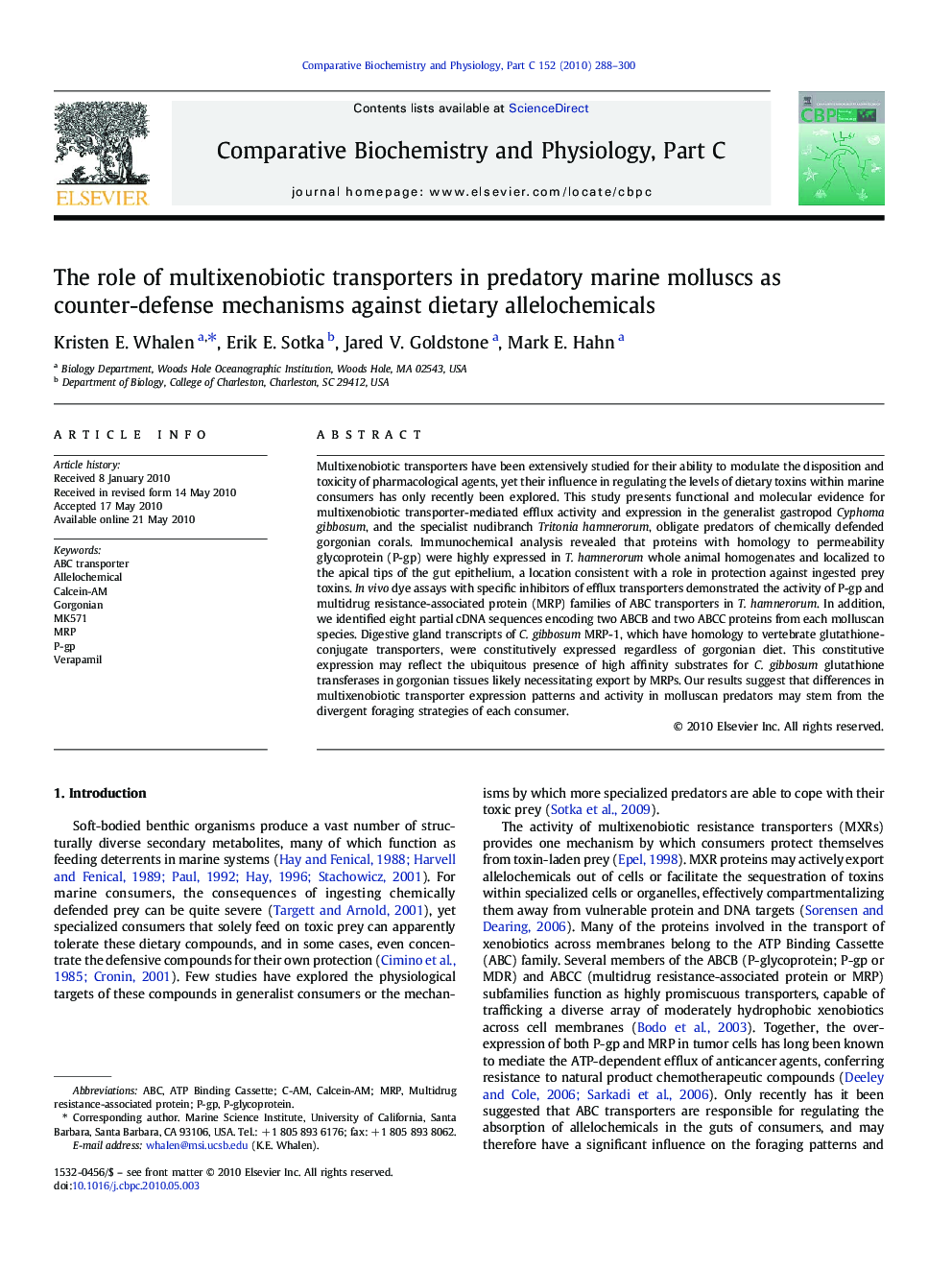| کد مقاله | کد نشریه | سال انتشار | مقاله انگلیسی | نسخه تمام متن |
|---|---|---|---|---|
| 1977608 | 1061505 | 2010 | 13 صفحه PDF | دانلود رایگان |

Multixenobiotic transporters have been extensively studied for their ability to modulate the disposition and toxicity of pharmacological agents, yet their influence in regulating the levels of dietary toxins within marine consumers has only recently been explored. This study presents functional and molecular evidence for multixenobiotic transporter-mediated efflux activity and expression in the generalist gastropod Cyphoma gibbosum, and the specialist nudibranch Tritonia hamnerorum, obligate predators of chemically defended gorgonian corals. Immunochemical analysis revealed that proteins with homology to permeability glycoprotein (P-gp) were highly expressed in T. hamnerorum whole animal homogenates and localized to the apical tips of the gut epithelium, a location consistent with a role in protection against ingested prey toxins. In vivo dye assays with specific inhibitors of efflux transporters demonstrated the activity of P-gp and multidrug resistance-associated protein (MRP) families of ABC transporters in T. hamnerorum. In addition, we identified eight partial cDNA sequences encoding two ABCB and two ABCC proteins from each molluscan species. Digestive gland transcripts of C. gibbosum MRP-1, which have homology to vertebrate glutathione-conjugate transporters, were constitutively expressed regardless of gorgonian diet. This constitutive expression may reflect the ubiquitous presence of high affinity substrates for C. gibbosum glutathione transferases in gorgonian tissues likely necessitating export by MRPs. Our results suggest that differences in multixenobiotic transporter expression patterns and activity in molluscan predators may stem from the divergent foraging strategies of each consumer.
Journal: Comparative Biochemistry and Physiology Part C: Toxicology & Pharmacology - Volume 152, Issue 3, September 2010, Pages 288–300